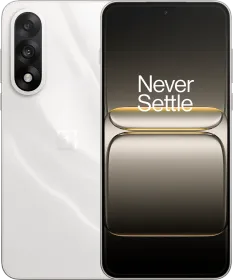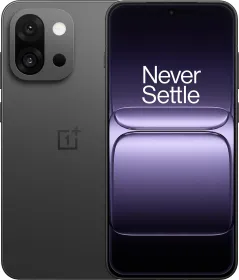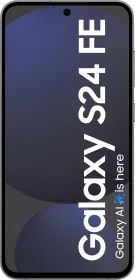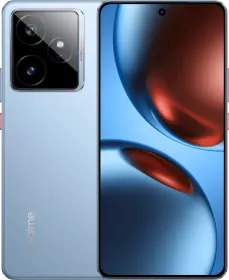The newly-launched OnePlus 13R competes directly with last year’s iQOO 12. Since both smartphones run on Snapdragon 8 Gen 3 SoC, they should provide a similar performance. However, despite the similarity, the smartphones have plenty of differences, including the screen brightness, camera resolution, battery capacity, software support, etc. To help you make an informed decision, here’s a detailed comparison between the OnePlus 13R and the iQOO 12.
OnePlus 13R vs. iQOO 12: Design


Dimensions
- OnePlus 13R: 161.7 x 75.8 x 8 mm; 206 grams
- iQOO 12: 163.2 x 75.9 x 8.1 mm or 8.4 mm; 198.5 grams or 203.7 grams
Design
With regards to design, the OnePlus 13R differs from the iQOO 12 in a few key aspects. First, the smartphone has a circular rear camera setup instead of the square-ish camera module on the iQOO 12. Further, the OnePlus flagship features an alert slider on the left frame.
Otherwise, both phones have a well-designed exterior with an aluminum frame and glass back, punch-hole screen, and symmetrical bezels on the front. While the OnePlus 13R features an IP65 rating, the iQOO 12 offers an IP64 dust and water resistance rating.
Colors
While the iQOO 12 is available in three colors, including Black, Red, and White (with BMW M branding), the OnePlus 13R is available in two finishes: Astral Trail and Nebula Noir.
Also Read: OnePlus 13 vs. Pixel 9: Which Is The Better Android Flagship In 2025?
OnePlus 13R vs. iQOO 12: Display


The OnePlus 13R has a 6.78-inch AMOLED screen that supports a variable refresh rate (1-120Hz) and a peak brightness of 4,500 nits (limited to 1,600 nits in the high-brightness mode). For those wondering, the screen features a pixel density of 450 ppi. Other features include 100% Display P3 support and 10-bit Color Depth.
Similar to the OnePlus 13R, the iQOO 12 also sports a 6.78-inch AMOLED screen with a variable refresh rate (1-144Hz) and a peak brightness of 3,000 nits (limited to 1,400 nits in the high-brightness mode). The pixel density of the phone is similar as well, i.e., 453 ppi.
Moreover, both the phones have a similar screen. However, it is the OnePlus 13R that provides a slightly brighter screen, which could be useful, especially for usage in well-lit environments or under direct sunlight.
OnePlus 13R vs. iQOO 12: Performance

Under their shiny exterior, both the OnePlus 13R and the iQOO 12 feature Qualcomm’s Snapdragon 8 Gen 3 SoC (4nm). The octa-core chipset has one 3.3GHz prime core, three 3.2GHz performance cores, two 3.0GHz balanced cores, and two 2.3GHz efficient cores, one of the most varied cluster designs on a smartphone chipset.
With the CPU, the chipset also has the Adreno 750 GPU, up to 16GB of LPDDR5X RAM, and up to 512GB of UFS 4.0 storage. Even though the processor is more than a year old, it is still one of the most capable smartphone chipsets, even in 2025, which is why it is among the top choices for relatively affordable flagships.
Also Read: Snapdragon 8 Gen 3 Phones: OnePlus 12, iQOO 12, Galaxy S24 and more

We tested the processor on the Galaxy S24 Ultra at the start of 2024, and it wouldn’t be a stretch to say that we were impressed. Further, in our review of the latest OnePlus 13R, we’ve mentioned how the Snapdragon 8 Gen 3 manages to achieve around 1.7 million points on AnTuTu 10 and 2,194/6,551 points in the single/multi-core GeekBench 6 test.
Despite the iQOO 12 has the same Snapdragon 8 Gen 3 SoC, it performed better on the AnTuTu 10 benchmark (around two million points) and the GeekBench 6 benchmark (2,292/7,169 points in the single/multi-core test). This could be due to the additional Q1 chip on the smartphone. Even so, both phones should perform similarly in day-to-day usage.
OnePlus 13R vs. iQOO 12: Optics
OnePlus 13R Camera Configuration



- 50MP (f/1.8, 24mm) Sony LTY700 primary camera with optical image stabilization
- 50MP (f/2.0, 47mm) S5KJN5 camera with a 2x telephoto lens
- 8MP (f/2.2, 16mm) ultrawide sensor with a 112-degree field of view
- 16MP (f/2.4, 26mm) selfie shooter
The primary camera on the OnePlus 13R can shoot 4K videos at 60 fps and comes with features like Nightscape, Hi-Res Mode, Ultra Steady Mode, Retouching, etc. The front camera, however, is limited to shooting 1080p videos at 30 fps.
iQOO 12 Camera Configuration

- 50MP (f/1.7, 23mm) primary sensor with optical image stabilization
- 64MP (f/2.6, 70mm) secondary sensor with periscope telephoto lens for 3x optical zoom (optical image stabilization)
- 50MP (f/2.0, 15mm) ultrawide sensor with a 119-degree field-of-view with autofocus
- 16MP (f/2.5) selfie shooter
The iQOO 12, being a flagship smartphone, is capable of recording 8K videos at 30 fps and 4K videos at 60 fps. However, the front camera, like the OnePlus 13R, can only record 1080p videos at 30 fps. The iQOO 12’s hybrid zoom maxes out at 100x.
Also Read: Vivo Y29 5G Vs. Realme 14x 5G: Which Is The Better Entry-Level Smartphone Under Rs. 15,000?
OnePlus 13R vs. iQOO 12: Software


Out of the box, the OnePlus 13R runs on OxygenOS 15, which is based on Android 15. Some key features of the custom user interface include improved lock screen customization and Dynamic Island-inspired notifications. Like the OnePlus 13, the OnePlus 13R will also get four Android updates and six years of security updates. In other words, the phone will receive Android 19.
In contrast, the iQOO 12 currently runs on Funtouch OS 15 update, also based on Android 15. Some new features of the operating system include AI Image Lab, S-Capture, Ultra Game Mode, Immersive Wallpapers, three screens on and off animations, and Priority Scheduling for boosting startup performance. With the launch in 2023, iQOO promised three years of Android updates and four years of security patches for the device.
In other words, the iQOO 12 will only get operating system updates till Android 17. Hence, if you’re looking for a smartphone with longer software support, the OnePlus 13R could be a better option.
OnePlus 13R vs. iQOO 12: Battery Life And Charging Speed

The OnePlus 13R features a 6,000 mAh battery. Further, the phone supports 80W wired charging, which can charge it up from 1 to 50% in 20 minutes (as mentioned on the official website).
In comparison, the iQOO 12 has a smaller 5,000 mAh battery that supports 120W fast wired charging. Further, the phone is rated to retain over 80% of its battery health upon completing 1600 charging cycles.
Also Read: Redmi Note 14 Pro+ vs. Vivo V40 5G: Which Is The Better Mid-Range Smartphone?
OnePlus 13R vs. iQOO 12: Connectivity

Connectivity options on the OnePlus 13R include Wi-Fi 7, Bluetooth v5.4 (A2DP, LE, aptX HD, LHDC 5), dual-frequency GPS, NFC, IR Blaster, and a USB Type-C 2.0 port.
The iQOO 12, like the OnePlus 13R, features Wi-Fi 7, Bluetooth v5.4 (albiet with support for more codecs, including A2DP, LE, aptX HD, aptX Adaptive, aptX Lossless), dual-frequency GPS, NFC, IR Blaster, and a USB Type-C 2.0 port.
OnePlus 13R vs. iQOO 12: Price And Conclusion

OnePlus 13R Price
iQOO 12 Price
Choosing between the OnePlus 13R and the iQOO 12 could be hard. However, if you prioritize the features that matter the most, you can make an informed decision. Clearly, the OnePlus 13R excels in the display, software support, and battery department. If these aspects are important to you, go with the OnePlus handset. Further, the phone’s 512GB storage variant is much more affordable than iQOO 12’s similar variant.
However, if you want the best possible performance, a more versatile camera setup, and a faster-charging smartphone, the iQOO 12 could be a better choice. Those who like using Funtouch OS 15 or wish to choose from more colors can also choose the iQOO 12 over the OnePlus 13R.
You can follow Smartprix on Twitter, Facebook, Instagram, and Google News. Visit smartprix.com for the latest tech and auto news, reviews, and guides.

































